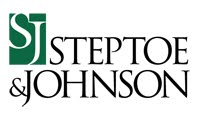In a 7 – 2 decision issued March 24, 2015, the U.S. Supreme Court held that decisions of the Trademark Trial and Appeal Board (TTAB) on the issue of likelihood of confusion, made in registration cases, can be binding on courts in deciding the same issue in subsequent infringement cases. Such “issue preclusion” will likely arise if the uses of the marks before the court are materially the same as the uses considered by the TTAB. The decision in B&B Hardware, Inc. v. Hargis Industries, Inc. is likely trigger more hotly contested — and more expensive — TTAB litigation.
In this case, B&B owned a registration for “Sealtight” for metal fasteners used in the aerospace industry. Hargis sought to register “Sealtite” for metal screws used in the manufacture of buildings. B&B opposed registration, claiming that use of the marks on the respective goods would create a likelihood of confusion. The TTAB agreed and sustained the opposition. In a parallel infringement action, the district court refused to be bound by the TTAB decision, reasoning that the TTAB is not an Article III court. The jury went on to find that confusion was not likely.
The Eighth Circuit affirmed. It held that while an administrative agency’s decision can be a basis for applying collateral estoppel, the doctrine was not appropriate in this context, primarily because the TTAB and the Eighth Circuit use different factors to evaluate likelihood of confusion.
In an opinion by Judge Alito, the U.S. Supreme Court reversed. It held first that “issue preclusion is not limited to those situations in which the same issue is between two courts” (emphasis in original). Rather, under Astoria Fed. Sav. & Loan Assn. v. Solomino, 501 U.S. 104 (1991), “courts may take it as a given” that Congress intends issue preclusion to apply to administrative proceedings where appropriate, except when a statutory purpose to the contrary is evident. The court held that no such purpose was evident in the Lanham Act of 1946.
The court acknowledged that the TTAB considers different factors than do courts in determining likelihood of confusion. In particular, the TTAB compares marks and goods as they are set forth in prior registrations and pending applications, whereas a court will consider all elements of the parties’ uses, including the context in which the marks appear on packaging. But the court held that the same legal standard of “likelihood of confusion” always applies, even if different usages are considered. Therefore, the possibility of applying collateral estoppel cannot be categorically ruled out.
Importantly, however, the court did not hold that issue preclusion always applies. The question depends primarily on whether the actual usages of the respective marks are “materially different” from the usages specified in the applications or registrations at issue. “If the TTAB does not consider the marketplace usage of the parties’ marks, the TTAB’s decision should have no later preclusive effect in a suit where actual usage in the marketplace is the paramount issue,” it said.
Justice Ginsburg separately concurred to emphasize this point. Quoting the authoritative McCarthy on Trademarks and Unfair Competition treatise, she noted that contested registrations are often decided upon “a comparison of the marks in the abstract and apart from their marketplace usage.” When the registration proceeding is of that character, she said, there will be no preclusion in a later infringement suit.
As a result, the preclusive effect of a prior TTAB decision will be a point of contention in a subsequent infringement action. The court will have to look closely at what the TTAB decided, and the evidence it relied upon. For example, in some cases the opposer relies on a registration which is unrestricted as to trade channels or likely purchasers, even though the opposer’s actual business may be restricted to a narrow area. This can sometimes lead to anomalous results, if the applicant seeks to register the same or similar mark for the same or similar goods, but uses its mark in entirely different fields of endeavor, such that the prospects for confusion in the “real world” are remote. Nevertheless, the TTAB will likely refuse registration in that scenario. It would appear that the B&B decision would permit the court, in a subsequent infringement case, to disregard the TTAB decision and decide “likelihood of confusion” based on the parties’ actual use.
In many cases, however, the question of preclusive effect will not be so clear cut. For this reason, parties litigating in the TTAB must consider that the TTAB decision will compel an identical result if infringement litigation ensues later. Typically, TTAB cases have been litigated in a more leisurely and less expensive manner than a court case. After B&B, some may choose to develop a fuller record to help assure preclusion in the event of a future infringement action against the applicant. This would lead to TTAB cases being litigated even more aggressively (and expensively) than they are now.
The decision may also encourage opposers, who fail to prevent registration at the TTAB, to seek review not by appeal to the federal circuit, but by the alternative means of filing a civil action in U.S. District Court under Section 21 of the Lanham Act. In such a case, the opposer would be entitled to de novo review of the TTAB decision and would be able to include infringement claims. The TTAB decision would have no preclusive effect in that case.
The B&B decision finally answers the question of which different circuits have taken different approaches. It does not, however, provide an answer to the question of whether a TTAB decision on likelihood of confusion will or will not have a preclusive effect on a court in a particular infringement litigation. That question will be determined on a case-by-case basis, under normal principles of issue preclusion.









